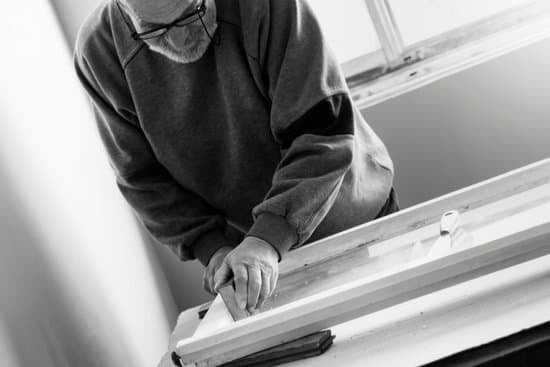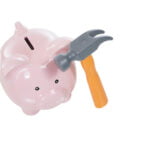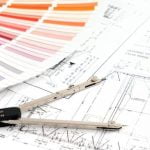Home improvement projects are an integral part of homeownership, allowing individuals to update and enhance their properties to better suit their needs and preferences. However, financing these projects can often be a challenge, especially for veterans who may have unique financial circumstances. This is where VA home improvement loans come into play.
With the increasing popularity of VA loans for home purchases, it should come as no surprise that veterans and active-duty military personnel are also turning to these loan options for home improvements. The Department of Veterans Affairs (VA) recognizes the importance of providing affordable financing solutions to help veterans maintain and upgrade their homes.
VA home loans, known for their competitive interest rates and flexible repayment terms, have gained traction in recent years as a popular choice among veterans looking to purchase or refinance their homes. But what many may not know is that these loans can also be utilized for home improvement purposes.
In this article, we will explore the different types of VA home improvement loans available and delve into the benefits they offer to veterans seeking to enhance their living spaces. Whether you’re looking to renovate your kitchen, install energy-efficient upgrades, or make necessary repairs, VA home improvement loans may be the solution you’ve been searching for.
By utilizing a VA loan specifically designed for home improvements, veterans can finance these projects without depleting their savings or resorting to high-interest personal loans. Not only do these loans provide an opportunity for homeownership stability but they also allow veterans to improve their quality of life by creating a more comfortable and functional living environment.
Join us as we delve deeper into the world of VA home improvement loans and discover how they can help make your dream renovations a reality.
Understanding VA Home Loans
VA home loans are a type of mortgage loan that is backed by the U.S. Department of Veterans Affairs (VA). These loans are specifically designed to provide affordable housing options for veterans, active-duty military personnel, and their eligible surviving spouses.
One of the main benefits of VA home loans is that they do not require a down payment, which can make buying a home more accessible for veterans who may not have substantial savings. Additionally, VA home loans typically have lower interest rates and more flexible qualification requirements compared to conventional mortgages.
The Basics of VA Home Loans
To be eligible for a VA home loan, individuals must meet certain service requirements. Generally, veterans must have served at least 90 consecutive days on active duty during wartime or 181 consecutive days during peacetime. Members of the National Guard or Reserves may also be eligible after serving for at least six years. Surviving spouses of veterans who died in the line of duty or as a result of a service-related disability may also qualify.
Once eligibility is determined, veterans can apply for a VA home loan through an approved lender. These lenders work with the VA to process and approve the loan application. It’s important to note that while the VA guarantees a portion of the loan against loss if the borrower defaults, they do not directly issue loans themselves.
Benefits of VA Home Loans
One of the key advantages of VA home loans is that they often do not require a down payment or private mortgage insurance (PMI), which can significantly reduce upfront costs for borrowers. This can make homeownership more attainable for veterans who may not have substantial savings or want to preserve their funds for other expenses.
Additionally, VA home loans typically offer competitive interest rates that are lower than those offered by conventional loans. This can lead to significant long-term savings for borrowers over the life of their loan.
Another benefit worth noting is that VA home loans come with a repayment guarantee from the VA. This means that if the borrower encounters financial difficulties that make it difficult to make their mortgage payments, they can seek assistance from the VA to explore options for loan modifications or alternative repayment arrangements.
The Purpose of Home Improvement Loans
Home improvement loans serve an important purpose in helping homeowners fund renovation projects and make necessary repairs to their homes. For veterans, these loans can be particularly beneficial, as they provide financial assistance for improving their homes while taking advantage of the unique benefits offered by VA loans.
There are several reasons why veterans may seek home improvement loans. One common reason is to increase the value of their property. By investing in home improvements, veterans can enhance the aesthetic appeal and functionality of their homes, ultimately leading to higher resale values. This can be especially useful for veterans who plan to sell their homes in the future or want to build equity over time.
Another reason why veterans may choose to pursue home improvement loans is to address safety or accessibility concerns within their homes. As service members age or experience disabilities, it may become necessary to modify their living spaces accordingly. Home improvement loans allow them to make necessary renovations, such as installing grab bars or ramps, widening doorways, or adding wheelchair-accessible features.
In addition to increasing property value and addressing safety concerns, home improvement loans can also be used for energy-efficient upgrades. Many veterans are looking for ways to reduce their energy consumption and lower utility bills. With a home improvement loan, they can invest in projects like adding insulation, upgrading windows and doors, or installing solar panels. These types of improvements not only reduce energy costs but also contribute to a more sustainable environment.
Overall, home improvement loans offer veterans the opportunity to make necessary upgrades and enhancements to their homes. Whether it’s increasing property value, improving safety and accessibility, or going green with energy-efficient upgrades, these loans provide the means for veterans to improve both the quality of their homes and their overall quality of life.
- Increasing property value.
- Addressing safety or accessibility concerns.
- Energy-efficient upgrades.
Exploring VA Home Improvement Loan Options
Types of VA Home Improvement Loans
There are two main types of home improvement loans available through the VA: the VA Cash Out Refinance Loan and the VA Energy Efficient Mortgage (EEM).
The VA Cash Out Refinance Loan allows veterans to refinance their existing mortgage while extracting cash from their home’s equity. This cash can then be used for various home improvement projects. To be eligible for this loan, veterans must meet certain requirements such as having sufficient credit, income stability, and a minimum qualifying debt-to-income ratio.
On the other hand, the VA Energy Efficient Mortgage (EEM) is specifically designed to finance energy-efficient improvements in a veteran’s home. These improvements could include upgrades such as solar panels, insulation, weather stripping, or efficient heating and cooling systems. The EEM can be utilized as part of a purchase or refinance loan. It is worth noting that additional restrictions may apply to EEMs in terms of loan amounts and eligible improvements.
Eligibility Requirements
To qualify for either of these types of home improvement loans through the VA, veterans must meet certain eligibility requirements. These requirements include obtaining a Certificate of Eligibility (COE) which verifies their military service history and entitlement to VA benefits. Veterans will also need to meet minimum credit score standards set by lenders, which can vary depending on the lender.
It is important to note that while the VA guarantees these loans, they are not directly responsible for providing them. Instead, private lenders such as banks and mortgage companies offer these loans to veterans with approval from the Veteran’s Administration.
In addition to meeting basic eligibility requirements, veterans must also provide documentation such as proof of income, employment history, and property appraisal reports in order to complete their loan application process efficiently. It is recommended that veterans consult with a VA-approved lender who can guide them through the specific requirements and help determine which type of home improvement loan is most suitable for their needs.
Advantages of VA Home Improvement Loans
VA Home Improvement Loans offer several advantages and benefits that make them a preferred choice for veterans over traditional options.
One major advantage of VA home improvement loans is the low interest rates offered. The Department of Veterans Affairs sets the maximum allowable interest rate for these loans, which is typically lower than what is available through conventional lenders. This can result in significant savings over the course of the loan repayment period.
Another key benefit of VA home improvement loans is the flexibility in terms of loan repayment. Veterans have the option to choose from various repayment plans, including fixed-rate or adjustable-rate mortgages, depending on their financial situation and preferences. Additionally, VA loans do not require private mortgage insurance (PMI), which can further reduce the overall cost of the loan.
VA home improvement loans also offer higher funding limits compared to other types of home improvement financing options. The VA allows borrowers to borrow up to 100% of the appraised value of their homes, meaning veterans can finance larger-scale renovation projects without having to worry about coming up with a significant down payment or seeking additional sources of funding.
Furthermore, VA home improvement loans provide veterans with access to reputable and experienced lenders who specialize in working with military members. These lenders understand the unique needs and circumstances faced by veterans and are dedicated to assisting them throughout the loan process.
Overall, choosing a VA home improvement loan can provide veterans with a range of advantages including lower interest rates, flexible repayment options, higher funding limits, and personalized customer service from knowledgeable lenders. When considering financing options for home renovations, veterans should explore the benefits that VA loans offer to make an informed decision that best suits their needs and financial goals.
| Advantages | Benefits |
|---|---|
| Low interest rates | Savings over time |
| Flexible repayment options | Customized plans |
| No private mortgage insurance (PMI) | Lower costs |
| Higher funding limits | Ability to finance larger projects |
| Access to reputable and specialized lenders | Dedicated customer service for veterans |
How to Apply for a VA Home Improvement Loan
Applying for a VA home improvement loan can seem like a complex process, but with the right guidance, it can be a smooth and straightforward experience. This step-by-step guide will walk you through the application process, highlight the required documentation, and address potential pitfalls to watch out for.
- Step 1: Determine your eligibility – Before applying for a VA home improvement loan, it’s essential to ensure that you meet the eligibility requirements. To qualify for this type of loan, you must be a veteran or an active-duty military personnel. Additionally, certain service requirements must be met. It’s recommended to check with your local VA office or visit the official VA website for specific eligibility criteria.
- Step 2: Gather necessary documentation – Like any other loan application process, you will need to provide certain documents to support your application. These may include proof of income, bank statements, tax returns, and proof of homeownership. It’s crucial to gather all the necessary paperwork before starting the application process to avoid delays.
- Step 3: Choose a lender – Once you have determined your eligibility and gathered all required documents, it’s time to find a lender who offers VA home improvement loans. It is recommended to shop around and compare different lenders to find the one that offers favorable terms and conditions.
- Step 4: Submit your application – After selecting a lender, you will need to fill out an application form provided by the lender. Make sure to complete all sections accurately and honestly. Any inaccurate information may lead to delays or even denial of your loan application.
- Step 5: Await approval and funding – After submitting your application, patiently wait for approval from the lender. The length of time it takes for approval can vary depending on various factors such as the complexity of your project and the volume of requests at that given time. If approved, funds are typically disbursed directly to you or paid directly to contractors as agreed upon.
Potential pitfalls to watch out for:
- Inadequate planning – Before applying for a VA home improvement loan, it’s crucial to plan your project thoroughly. Be clear about the scope of work, estimated costs, and have a timeline in place. Proper planning can help ensure that you request the appropriate loan amount and avoid potential issues during the project.
- Over-borrowing – While it may be tempting to request more funds than you actually need, it’s important to borrow responsibly. Overborrowing can lead to excessive debt and financial strain down the line. Stick to your budget and only borrow what is necessary to complete your home improvements.
- Not comparing lenders – It’s essential to compare different lenders to find the best terms and conditions for your VA home improvement loan. Interest rates, fees, repayment terms, and customer reviews are all factors that should be considered when selecting a lender. Taking the time to research and compare options can save you money in the long run.
By following this step-by-step guide and being aware of potential pitfalls, veterans can successfully navigate the application process for VA home improvement loans. Remember to stay organized, gather all required documentation, choose a reputable lender, and plan your project effectively for a successful outcome.
Case Studies
In this section, we will explore real-life case studies of veterans who have utilized VA home improvement loans to enhance their homes and improve their quality of life. These examples will highlight the diverse ways in which these loans can be used and the positive outcomes they have generated.
Case Study 1:
John Smith, a retired Army veteran, wanted to renovate his outdated bathroom to make it more accessible and functional. With the help of a VA home improvement loan, he was able to install grab bars, widen the doorway, and replace the bathtub with a walk-in shower. These modifications not only made John’s daily routine easier but also increased the value of his home.
Case Study 2:
Mary Johnson, an active-duty Navy servicemember, wished to upgrade her kitchen to create a more modern space for family gatherings. Through a VA home improvement loan, she was able to purchase new appliances, install new countertops and cabinets, and update the flooring. The renovated kitchen not only brought joy to Mary’s family but also made her home more attractive when she decides to sell in the future.
Case Study 3:
Robert Thompson, a disabled Marine Corps veteran, needed modifications done to his home to accommodate his mobility limitations. With a VA home improvement loan, he was able to convert his porch into an accessible ramp entrance and install handrails throughout his house. These modifications allowed Robert to move freely within his own home safely and independently.
These case studies demonstrate how VA home improvement loans have positively impacted veterans’ lives by providing financial assistance for necessary renovations or upgrades. By utilizing these loans, veterans are able to create safer living environments for themselves and their families while simultaneously increasing the value of their homes.
| Veteran | Renovations | Impact on Home and Life |
|---|---|---|
| John Smith | Accessible bathroom modifications | Eased daily routine and increased home value |
| Mary Johnson | Kitchen upgrades | Enhanced family gatherings and improved home appeal |
| Robert Thompson | Accessibility modifications | Enabled safe, independent mobility within the home |
These case studies reveal the wide range of possibilities for using VA home improvement loans and how they have significantly improved the homes and lives of veterans. With these success stories in mind, it is clear that VA home improvement loans can be a valuable resource for veterans seeking to make necessary renovations or improvements to their homes.
Frequently Asked Questions
- Interest Rates: One of the most common questions regarding VA home improvement loans is about the interest rates. VA loans typically have competitive interest rates that are lower than conventional loans. The specific interest rate for a VA home improvement loan will vary depending on factors such as credit score, loan amount, and repayment term. It’s important to shop around and compare different lenders to ensure you get the best interest rate possible.
- Funding Limits: Another frequently asked question is about funding limits for VA home improvement loans. The maximum loan amount provided by the VA for home improvements is $50,000. However, this doesn’t mean that veterans are limited to a $50,000 loan.
Veterans can obtain a loan higher than this amount if they combine their home improvement loan with an existing VA mortgage or refinancing option. It’s important to note that funding limits may also depend on factors such as the appraised value of the property and available equity. - Repayment Terms: Veterans often want to know about the repayment terms for VA home improvement loans. Fortunately, these loans offer flexible repayment options. The length of the repayment term will vary depending on the loan amount, but it can range from 5 years up to 20 years in some cases. Additionally, veterans have the option to make additional payments or pay off their loan early without incurring any prepayment penalties.
It’s important for veterans considering a VA home improvement loan to consult with a trusted lender who specializes in these types of loans and can provide personalized advice based on individual circumstances. Each veteran’s situation may be unique, so it’s essential to explore all options and understand all aspects of the loan before making a decision.
Conclusion
In conclusion, VA home improvement loans can be a valuable resource for veterans and active-duty military personnel looking to enhance their homes and improve their quality of life. Throughout this article, we have discussed the importance of home improvement loans and the growing popularity of using VA loans for this purpose.
We have explored the different types of home improvement loans available through the VA and their eligibility requirements. From cash-out refinances to energy-efficient mortgages, there are a variety of options that cater to different needs and financial situations.
The advantages of choosing VA home improvement loans over traditional options cannot be overstated. These loans offer competitive interest rates, flexible repayment terms, and may not require any down payment or mortgage insurance. Additionally, veterans may qualify for generous funding limits that can greatly help them achieve their renovation goals.
To apply for a VA home improvement loan, veterans must follow a step-by-step guide on the application process and provide the required documentation. It is important to be aware of potential pitfalls and challenges that may arise during this process to ensure a smooth experience.
In summary, if you are a veteran or active-duty military personnel seeking to enhance your home, I encourage you to explore VA home improvement loan options. These loans provide an array of benefits that can greatly improve both your home’s value and your overall quality of life.
Whether it’s renovating your kitchen, adding an extra bathroom, or making energy-efficient upgrades, VA home improvement loans can help make your dreams a reality while easing the financial burden. Don’t hesitate to take advantage of this valuable resource designed specifically for you as our nation’s heroes.
Frequently Asked Questions
Can a VA loan be used for improvement?
Yes, a VA loan can be used for improvement. The Department of Veterans Affairs (VA) offers the VA loan program to help eligible veterans, service members, and their surviving spouses purchase or refinance homes. While the primary purpose of a VA loan is to finance the purchase of a home, it also allows borrowers to make certain improvements to the property.
These improvements can include repairing or replacing essential components such as heating and cooling systems, electrical wiring, plumbing systems, or making structural alterations that improve the livability of the home. The VA loan program aims to ensure that veterans have safe and decent housing, so allowing funds for improvements contributes to this goal.
Can I buy a fixer upper with my VA loan?
Yes, you can buy a fixer-upper with your VA loan. One advantage of using a VA loan is that it allows borrowers to finance not only the purchase price of a home but also additional funds for repairs and renovations through the VA Renovation Loan program known as the VA Rehabilitation Loan (also called VA Rehab).
This feature provides an opportunity for veterans or service members to purchase properties in need of repairs or updates and use part of their loan to cover these expenses. It’s important to note that there are specific guidelines and requirements when using a VA loan for fixer-uppers, so consulting with your lender and understanding all eligibility criteria is crucial.
What is the VA guarantee on eligible home loans for up to?
The VA guarantee on eligible home loans provides protection to lenders against losses if borrowers default on their mortgages. The guarantee amount varies based on different factors such as location and whether it’s your first time using a VA loan or subsequent use. For most loans up to $144,000 (as of 2021), the guarantee typically covers up to 25% of the principal balance owed on the mortgage loans guaranteed by the VA.
In high-cost counties where mortgages often exceed $400,000, the guarantee may be capped at 25% of $548,250 (the maximum limit as per 2021). The VA guarantee encourages lenders to offer favorable loan terms and financing options to eligible veterans, making homeownership more accessible and affordable.

I’m thrilled to have you here as a part of the Remodeling Top community. This is where my journey as an architect and remodeling enthusiast intersects with your passion for transforming houses into dream homes.





